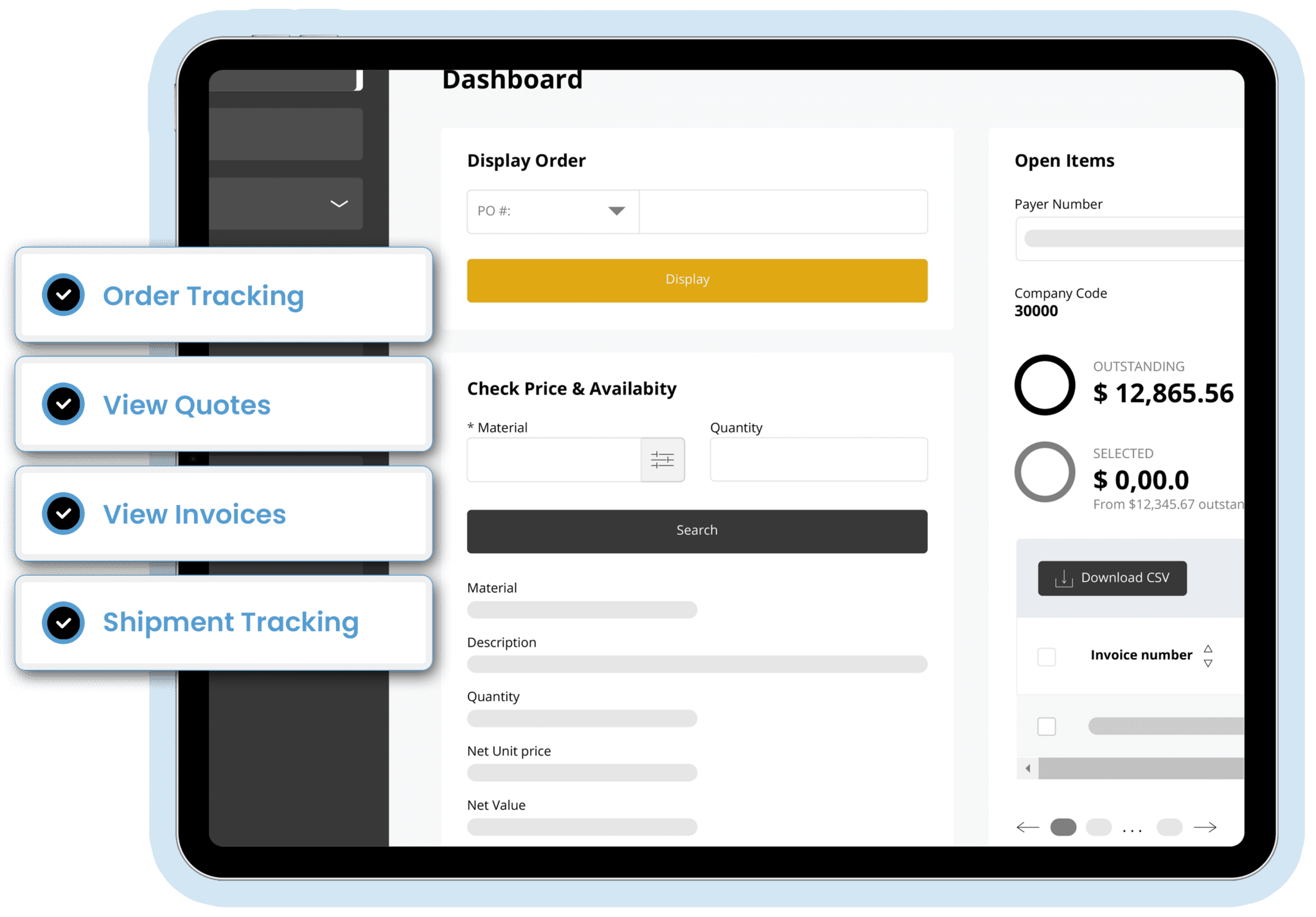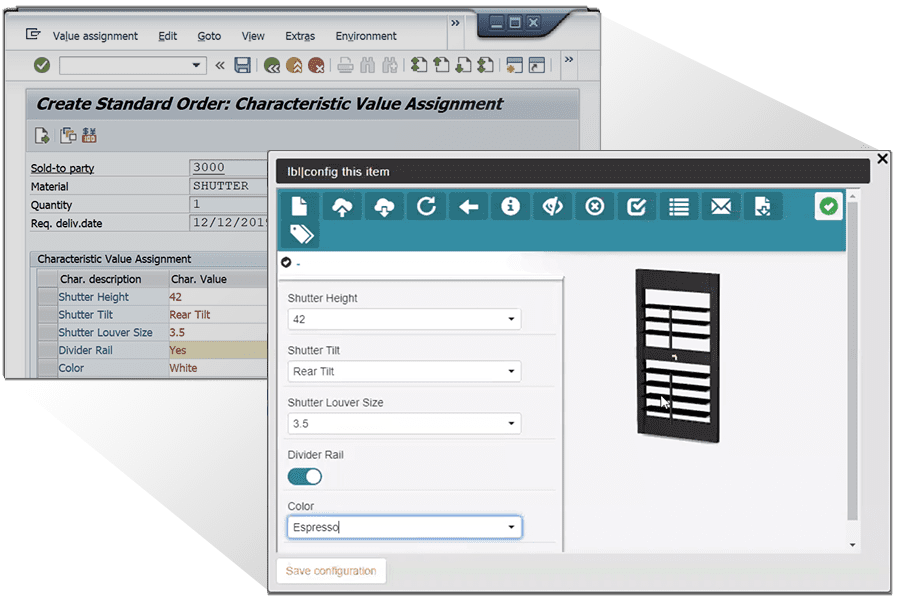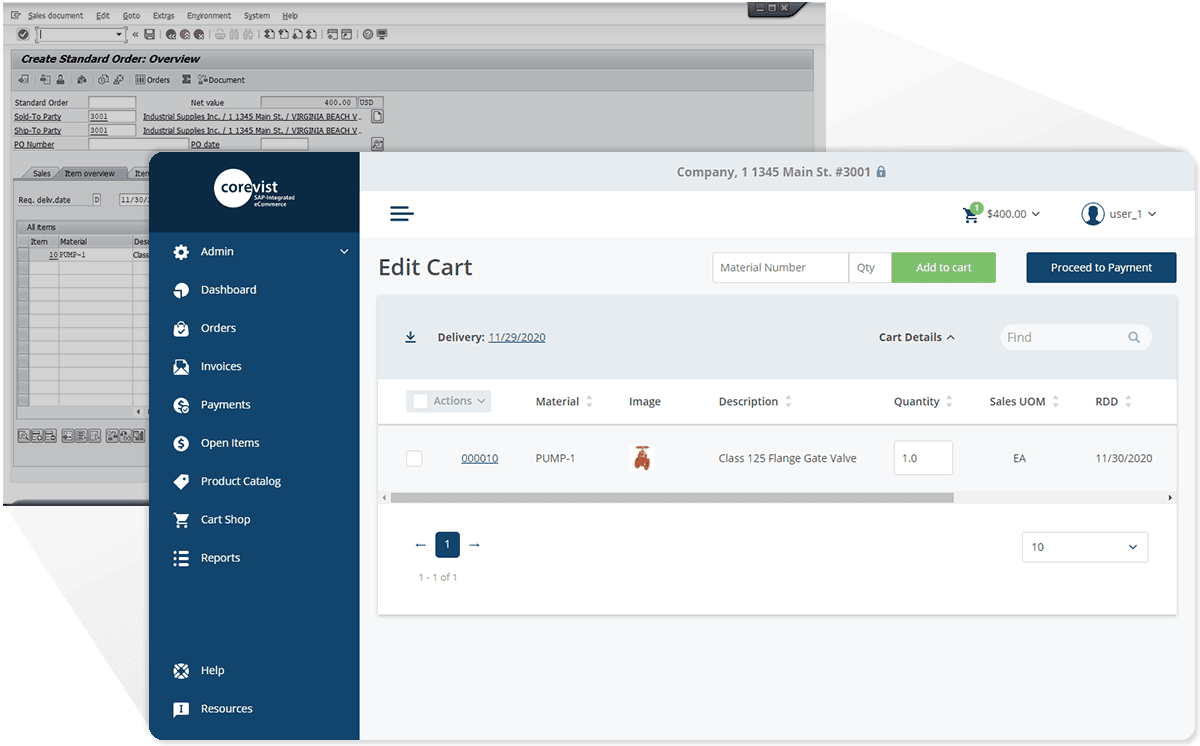
Everyone wants a better buying experience for configurable products.
Customers and sales reps want to configure products in a self-service solution. Yet most manufacturers rely on cumbersome, manual quoting processes for configurable products. This leads to friction in your customer experience—and waste in your order-to-cash cycle.
What if you could offer a self-service CPQ buying experience integrated to SAP?
What if buyers & reps could configure products in your eCommerce portal?
Imagine a B2B eCommerce solution with CPQ + SAP integration. Your portal would automatically offer the right SKUs to each customer or sales rep. Depending on your needs, users could post RFQs or real orders to SAP.
- Your sales reps could cut friction from your quoting process and shorten the sales cycle.
- Your customers could configure products and place orders (or RFQs) through self-service, cutting your cost to serve.
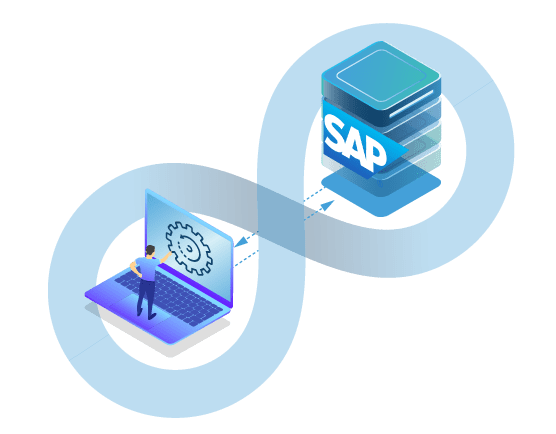
Welcome to the Corevist Platform with CPQ Integration.
B2B eCommerce integrated to SAP. CPQ-ready.
The Corevist Platform is a next-generation B2B eCommerce solution which includes prebuilt integration to SAP. It covers product browsing, order placement, tracking, and account management—all with customer-specific SAP data and business rules enforced.
When integrated with a CPQ solution, Corevist empowers your buyers and/or sales reps to configure products through self-service. With all relevant business rules enforced (for every product, every user), each order or RFQ posts to SAP 100% error-free.
Why Integrate CPQ to the Corevist Platform?
The Corevist Platform offers unique benefits for the B2B eCommerce portion of your SAP CPQ experience:
✓ Day One Integrated. Our platform includes prebuilt, configurable integration to SAP. No duplication or synchronization of SAP data or business rules.
✓ Launch it tomorrow. Corevist’s unique methodology delivers critical functionality at GoLive.
✓ We’ve got your back. As a managed provider implementing, hosting, and supporting our solution, we stick around for the long haul.

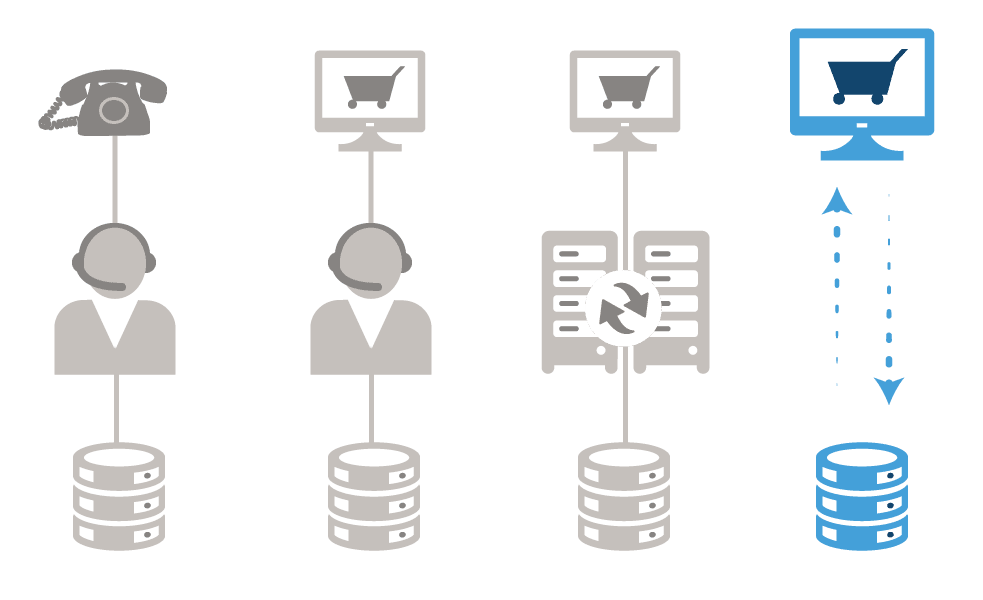
No other solution offers our efficiency gains.
Corevist’s unique SAP integration architecture eliminates existing cost and processes in your OTC cycle:
- Don’t have a CPQ/B2B eCommerce solution? Our architecture eliminates the expense and risk of phone/fax/email for orders and RFQs.
- Got CPQ + eCommerce without integration? Our architecture cuts the cost of re-keying orders and RFQs into SAP.
- Got CPQ + eCommerce with a middleware integration? Corevist eliminates the expense & risk of batch synchronization for orders and RFQs.
CPQ-enabled solutions for all use cases:
The Corevist Platform + CPQ
Full commerce suite with rich content, integrated to SAP VC out of the box, CPQ interface available.Your buyers get an Amazon-style experience, personalized catalogs, self-service CPQ, and much more.
Self Serve Ordering + CPQ
Manufacturer ordering portal and shopping cart, fully integrated to SAP VC, CPQ interface available.Give professional buyers lightning fast ordering by SKU + easy self-service CPQ buying.
Field Sales Portal + CPQ
Mobile-ready field sales portal for your inside & outside sales reps, CPQ interface available.Your reps can configure products and place orders on behalf of customers, from any device.
Any CPQ vendor:
- ConfigAir
- Tacton
- Configit
- Other CPQ vendors
Any vertical:
- Medical devices CPQ
- Pharmaceutical manufacturing CPQ
- Commercial products
- Industrial manufacturing
- Automotive
- Consumer packaged goods
- Construction materials
Any device:
- Mobile
- Tablet
- Desktop
SAP CPQ Solutions: Best Practices
Manufacturers who sell configurable products are grappling with the challenge which the ecommerce age presents. As buyers increasingly expect the convenience of online purchasing, a problem arises: How do you handle configurable products in B2B eCommerce? That’s why we’ve seen an increasing demand for self-service CPQ (configure/price/quote) solutions over the last few years.
At Corevist, we solve this problem with a visual product configurator (courtesy of a partner like ConfigAir) which can integrate with the Corevist Platform.
So what are buyers looking for when it comes to configurable products? How can you meet their needs in the ecommerce age? Let’s unpack that.
The mindset shift: CPQ solutions aren’t just for Sales anymore
CPQ solutions for Sales are nothing new. All the CRM platforms recognize that this is key functionality for Sales reps, and they’ve covered this with integrations between the CRM platform and various CPQ solutions.
And, naturally, the CPQ solution providers have embraced CRM platforms as their key integration point.
What hasn’t gotten much play is the customer-facing CPQ solution.
Of course, that’s partly for good reason. The larger and more complex a product is, the more risk the manufacturer takes on in allowing customers to configure the product themselves. A massive industrial generator, for example, isn’t exactly a one-click purchase. It’s expensive to ship, and if the final configured product is bespoke/custom, heads may roll if the product was configured incorrectly by a customer.
Three points on this front:
- Products that are this complex are still viable candidates for self-service configuration, as long as the final destination is placing an RFQ, rather than an actual order.
- Many configurable products aren’t this complex. Not only are they great candidates for self-service, but they’re entirely suitable for instant order placement rather than RFQ placement. For example, consider a window shutter that has multiple options for trim style, louver tilt, and so on. A B2B buyer who’s used to buying shutters will know how to configure the product the way he/she needs for the project.
- A good CPQ solution will only allow “manufacturable” configurations. We’ll talk about this in more detail below.
For manufacturers with configurable products, the call is clear: Determine if there is an opportunity for you to offer self-service CPQ, whether it ends in RFQ placement or order placement.
What buyers want: Easy, intuitive, self-service product configuration
Avionos’ 2019 survey of 150 B2B buyers uncovered some fascinating trends in customer expectations. As Avionos put it, “Suppliers cannot meet buyers’ expectations without continuously and strategically innovating their eCommerce offerings.” The survey found that this was true of configurable products in particular:
- When asked to select factors which they consider when making purchases from suppliers, 31% chose “online configure/price quoting” as an important factor. This is particularly significant, as there’s no indication that respondents came exclusively from companies that buy configurable products.
- When asked where they start their purchasing process, the #1 answer was “A supplier’s website or portal” (32% of respondents).
Constraints: How to make CPQ actually work for customers
As you’re evaluating self-service CPQ solutions, there are two requirements which any potential solution must fulfill:
- The solution must accept only manufacturable configurations. I.e., it must reject invalid configurations of the product. For manufacturers on SAP ERP, this means the CPQ solution needs to integrate with SAP VC (variant configuration) so that all configurable product rules are honored in the web store. HINT: Corevist Commerce achieves this with integration to your SAP VC data.
- The solution must be easy for a non-technical person to use. If the whole idea is to put product configuration in the hands of your customers, then the self-serve CPQ interface needs to be intuitive, easy to use, and accessible within your B2B eCommerce web portal. HINT: That’s why we offer Configair’s powerful configuration engine and product visualizer—right within Corevist Commerce.
Added benefit: Demand chain visibility
Here’s where customer-facing, SAP-integrated CPQ solutions really excel. They give your manufacturing operation visibility into demand—something which no CRM-based solution can do.
When a CRM system configures a product, the manufacturing plant typically doesn’t get visibility into the pending demand—because the RFQ lives in the CRM, not the ERP. The CRM doesn’t actually send that RFQ to the ERP as an order until a Sales rep finalizes the RFQ and turns it into an order.
Since the CRM-based CPQ solution doesn’t post anything directly to SAP, you lose visibility in the demand chain. This can create delays in delivery, because you don’t see what the demand is and aren’t prepared to meet it logistically.

Ready To Learn More?
Schedule a call

